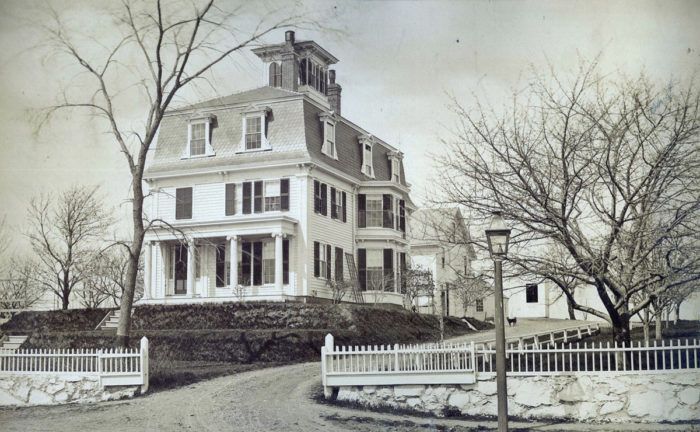Preservation Carpentry Keeps Craft Alive
As preservationists, these craftsmen employ time-honored carpentry techniques to achieve historical accuracy in pre-20th century homes.

David Boronkay, Billy Burns, and Asher Nichols possess a unique skill set. As preservationists, the craftsmen employ time-honored carpentry techniques to achieve historical accuracy in pre-20th century homes. As a graduate of the North Bennet Street School’s Preservation Carpentry program, Burns shares a deep understanding of New England’s architectural heritage with both Boronkay and Nichols. Stabilizing compromised structures, preserving architectural details, and re-creating historical design elements are their purview. Their quality workmanship ensures continued long life for some of New England’s oldest houses.

“I think it is important to honor the history of older homes,” says Boronkay, principal of Slocum Hall Design Group. “Preserving or replicating what is original to the house helps maintain its vintage integrity. If someone is looking to truly restore a home, the original woodwork is very important to the basic fabric of the overall design.”
Sometimes their work is a matter of removing decades of paint and refurbishing the wood to its original state. Other times, they may be charged with traditionally milling every piece of woodwork by hand. In either case, Nichols, principal of Asher Nichols & Craftsmen (ashernichols.com), notes: “Working with the palette that is presented and the surroundings of the property is the most important thing.” Boronkay adds, “In houses that have been essentially bastardized since the 1960s, ’70s, and ’80s, where original moldings have been covered up or ceilings have been dropped, that’s when we go in and do a demolition. We look for clues and find original moldings that we can then replicate—it really enriches the character of the house.”

Recently, Nichols and his team renovated the interiors of a 1920s house in Brookline, Mass. As with many of their projects, the goal was to modernize its functionality in terms of cost efficiency and amenities, while maintaining historical accuracy, which is particularly important given the home’s location in a historic district. A large part of the work entailed matching the new molding profiles with those that existed, on a room-by-room basis.
Burns, a carpenter with Asher Nichols & Craftsmen, is versed in architectural details dating back to the 1600s. He makes the point that restoration work in New England includes houses from the 17th century up through modern times. “It doesn’t need to be an 18th-century home to have restoration carpentry work done,” he says. Regardless of the era he is replicating, Burns appreciates the speed at which modern tools accomplish centuries-old techniques. On occasion, however, he resorts to old-school methods. “Though today’s tools are faster and stronger, there have been times when I go back to taking out my planes and chisels when doing historic trim work or planing a window.”

In addition to its role in maintaining historical integrity, carpentry work can help to date a house. If, for example, the frame is made of hewn timber—round logs made square using an ax, which leaves scallop-shaped marks—then the house dates to the 1700s or early 1800s when that technique was ubiquitous. Likewise, circular-sawn timber reveals arcing marks, indicating mid- to late-1800s construction.

To every job Nichols brings a philosophy developed around the ideas of craftsmanship and working with your hands. “If you appreciate and respect the effort and thought that went into the building of these historic homes, that will give you a good basis to [reproduce] the passion and craft, and make it blend as well as it can,” he says. It is this love of history, materials, and hand work that promises the preservation of the Northeast’s cherished period homes.

Old House Journal Recommended Products
Fine Homebuilding receives a commission for items purchased through links on this site, including Amazon Associates and other affiliate advertising programs.

Musings of an Energy Nerd: Toward an Energy-Efficient Home

Graphic Guide to Frame Construction

All New Bathroom Ideas that Work






























View Comments
Good stuff. Can we see more articles like this with specific houses/projects documented? I am in the middle of restoring our 1913 Hughes Brothers house in Nebraska. Cleaning up painted over oak trim, replacing stair treads, etc.
Good work.....
Does FH have an ARCHIVE of past articles? I bet they would help you. There are many Facebook groups that address restoration and preservation. Ask to be a member and learn from the pros. I do!